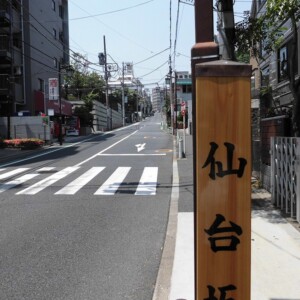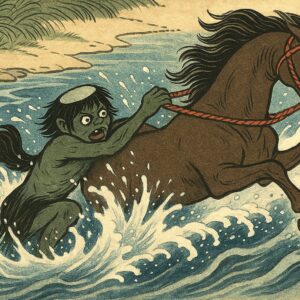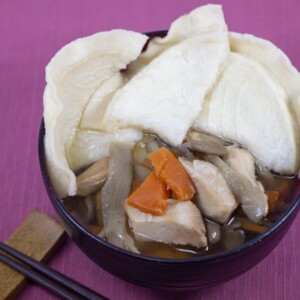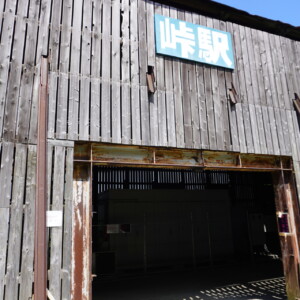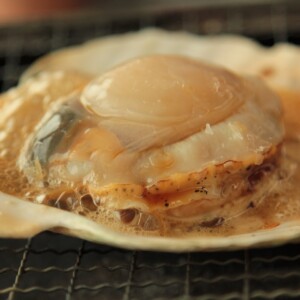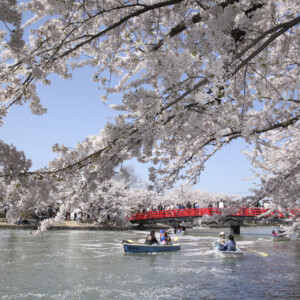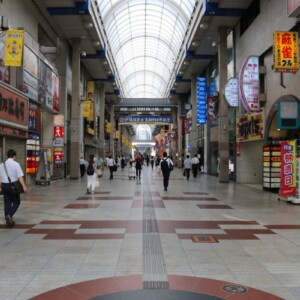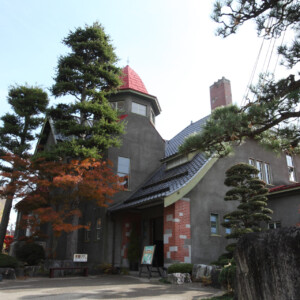
30 Surnames with Roots in Aomori Prefecture's Prestigious Families
table of contents
- 1 30 surnames connected to prestigious families in Aomori Prefecture (in alphabetical order)
- 1.1 Awaya
- 1.2 Ichichoda
- 1.3 Oura
- 1.4 Okuse
- 1.5 Comb puller
- 1.6 Shichinohe
- 1.7 Shinohe
- 1.8 Sugiyama
- 1.9 Seito
- 1.10 Daikoji Temple
- 1.11 Daido-ji Temple
- 1.12 Takeda
- 1.13 Tsugaru
- 1.14 Tsushima
- 1.15 Tsutsumi
- 1.16 Tsubota
- 1.17 Tsurugiji
- 1.18 Tonuma
- 1.19 Tobishima
- 1.20 Namioka
- 1.21 Narumi
- 1.22 Nanbu
- 1.23 Nomura
- 1.24 Noro
- 1.25 Hirayama
- 1.26 Herai
- 1.27 Maita
- 1.28 Matsuhashi
- 1.29 Murai
- 1.30 Morita
- 2 A series of surnames with roots in prestigious families from each prefecture in Tohoku
Every place across Japan, there are prestigious and famous families who are rumored to be so-called "local famous people." Even if you say, "We are a very ordinary family," it is not uncommon to find that if you trace our ancestors carefully, they actually belong to a family of venerable samurai.
In this article, we look into the surnames of prestigious families in Aomori Prefecture. If you have ever had a classmate with a surname like that, it's possible that they actually come from a good family.
30 surnames connected to prestigious families in Aomori Prefecture ( alphabetical order)
the Nanbu clan , who built a vast territory and had their family members spread throughout the country , and there is a strong impression that even people with completely different surnames can be traced back to the Nanbu clan.
Awaya
A wealthy merchant from Aomori Minato Echizencho (now Aomori City). The first generation, a Kitamaebune ship captain, was shipwrecked off the coast of Tappi and, after being rescued, opened a fish shop in Aomori under the name "Awaya changed his business to a kimono merchant under the name "Oyo,"
Ichichoda
A branch of the Oura clan of Mutsu. The family younger brother of Mitsunobu Nanbu (later Mitsunobu Oura) , a member of the Nanbu Kuji clan. They are said to have been a samurai family based at Ichimachida-kan in Ichimachida Village, Tsugaru County, Mutsu Province (present-day Ichimachida, Hirosaki City). They served the Tsugaru clan for generations, and during the Edo period became Tsugaru feudal lords, changing their name to the Nishidate clan.
Surname Origins Net which lists the number of people with the surname nationwide based on government statistics and national telephone directory data , there are still about 60 people in Hirosaki City who use the surname "Ichimachida."
Oura
Nanbu Mitsunobu (later Oura Mitsunobu) a member of the Nanbu Kuji clan , entered Tanesato Castle in Ajigasawa Town, Nishitsugaru County, as a suppressor for the Ando clan. Later, in 1502, they built Oura Castle in what is now Kata and Godai, Hirosaki City, Aomori Prefecture, and used it as their base, henceforth calling themselves the Oura clan. During the reign of their descendant, Oura Tamenobu , the clan became independent from the Nanbu clan and subsequently became the Tsugaru clan
Okuse
A local clan in the northern part of Mutsu Province. They are said to be a branch of the Ogasawara clan, who moved to the area around the Kamakura period following Nanbu Mitsuyuki, the founder of the Nanbu clan. They took the name Okuse because they followed the Nanbu clan and based themselves in Okuse Castle, which was located in what is now Okuse, Towada City, Aomori Prefecture. During the Sengoku period, they served as the Nanbu clan's deputy governor, based in Abukawa Castle (now Nishitazawa, Aomori City).
Myojiyurai.net which lists the number of people with the surname nationwide based on government statistics and national telephone directory data , there are currently around 1,100 people with the surname Okuse nationwide, with over 500 of them concentrated in Aomori Prefecture.
Comb puller
They were local lords of Sannohe County, Mutsu Province. They were a branch of the Nanbu clan and the Shinohe clan, and as their name suggests, they were based in Kushibiki Castle (now Kushibiki Tategami, Hachinohe City, Aomori Prefecture) and were involved in the religious ceremonies of Kushibiki Hachiman Shrine
Myojiyurai.net which lists the number of people with the surname nationwide based on government statistics and national telephone directory data , there are currently around 3,000 people with the surname Kushibiki nationwide, of which approximately 1,200 are concentrated in Aomori Prefecture and 900 in Hokkaido.
Shichinohe
The Nanbu clan of Hachinohe, a branch of the Tsugaru clan, is a local lord. There are various theories as to the origin of the Nanbu clan, including one that the third son, Asaakira, or the fourth son, Asaakira, of Nanbu Mitsuyuki, the founder of the Nanbu clan, was the first to take the name Shichinohe, and another that Nanbu Masamitsu, the eighth head of the Nejo Nanbu clan, handed over the family headship in his later years and retired to Shichinohe Castle, becoming the ancestor of the Shichinohe clan.
Shinohe
The Nanbu clan is said to have originated when Munekiyo, the fifth son of Nanbu Mitsuyuki, the founder of the Nanbu clan, was given the town of Yonohe in Ninohe County and took the name Yonohe. The Yonohe clan has branches including the Takeda, Kindaichi, Kushibiki, Nakano, and Nukazuka clans.
Sugiyama
Ishida Mitsunari, one of the five magistrates who played a central role in the Toyotomi government during the Azuchi-Momoyama period Ishida Shigenari, the second son of Mitsunari, who served as a page to Toyotomi Hideyori, fled to Tsugaru after his defeat at the Battle of Sekigahara, changed his surname to "Sugiyama," and settled in Fukami Village (now Itayanagi Town, Kitatsugaru District), where he was protected by the Tsugaru domain.
Shigenari's eldest son, Yoshinari, married the daughter of Tsugaru Nobuhira, the second lord of the Hirosaki domain, and became a chief retainer. From then on, the Sugiyama family continued to serve as senior retainers of the Hirosaki domain for generations.
Toyotomi is engraved on the graves of Shigenari and the successive generations of the Sugiyama family at Sotoku-ji Temple (Hirosaki City, Aomori Prefecture)
Seito
"Seibien" created by the 24th head of the family, Seito Moriyoshi, is the three most famous gardens of the Meiji period and is still beloved today as a nationally designated place of scenic beauty.
Link: Nationally designated scenic spot "Seibien"
Daikoji Temple
They were local lords from Hiraga County, Mutsu Province (present-day Hirakawa City and Owani Town area). Although much of their family tree is unclear, they are said to have descended from Tako Danjozaemon Mitsuyasu, the fourth son of Nanbu Nobutoki, the 20th head of the Nanbu clan. According to the "Short History of the Nukabe Five Counties," Mitsuyasu's grandson, Kageyuki, was based in Daikoji (present-day Hirakawa City) and called himself the Daikoji clan.
Daido-ji Temple
The chief retainer of the Tsugaru domain. The name Daidouji comes from the fact that it originated in Daidouji, Tsuzuki County, Yamashiro Province (present-day Ujitawara Town, Tsuzuki County, Kyoto Prefecture). A senior retainer of the Hojo clan since Hojo Soun, Daidouji Naohide, a descendant of the Hojo clan, passed through Owari and became a retainer of the Tsugaru domain after the downfall of the Hojo clan.
Daidouji Masashige , a senior vassal of the Hojo clan during the Sengoku period who, as the lord of Matsuida Castle in Ueno, opposed Toyotomi Hideyoshi's Siege of Odawara .
Takeda
He was a wealthy merchant from Kanagi, Tsugaru County (present-day Kanagicho, Goshogawara City). He opened the Kanagiya kimono store near Hirosaki Castle and became a purveyor to the Hirosaki Domain. He grew into one of Tsugaru's leading merchants during the Meiji period.
Tsugaru
It all began when Mitsunobu Nanbu, a member of the Nanbu Kuji clan, entered Tanesato Castle in Ajigasawa Town, Nishitsugaru County, as a suppressor for the Ando clan. His descendant, Tamenobu Oura, led a so-called "gekokujo" (rebellion against superiors) against the Nanbu clan, their master, and captured Ishikawa Castle (now Ishikawa Daibutsushita, Hirosaki City), the residence of Takanobu Ishikawa, a senior vassal of the Nanbu clan, and gained independence from the Nanbu clan.
Later, Toyotomi Hideyoshi granted him the Tsugaru domain, and around this time he changed his surname from Oura to Tsugaru. After the Battle of Sekigahara , the Hirosaki Domain was established, and Narinobu became its first lord.
Tsushima
A wealthy farmer from Kanagi, Tsugaru County (now Kanagi-cho, Goshogawara City). Coming from a lineage of businessmen with a knack for business, he became successful in secondhand clothing stores, tofu shops, and finance, accumulating land and becoming a major landowner. His family has produced many notable figures, including politicians and actors, the most famous of which is the literary giant Dazai Osamu (real name: Tsushima Shuji) .
The Tsushima family's mansion in Kanagi Town was sold after the war and was briefly turned into a ryokan inn called "Shayokan." It is now preserved and open to the public as the Dazai Osamu Memorial Museum called "Shayokan."
Tsutsumi
The fourth son of Nanbu Nobutoki, the 20th head of the Nanbu clan, Tago Danjozaemon Mitsuyasu , moved from Tago-kan (now Tago-cho, Sannohe County) to Tsutsumigaura Castle (now Matsubara area, Aomori City) and took the name Tsutsumi.Further south, he built Yokouchi Castle (now Yokouchi, Aomori City), and is said to have exerted influence in the surrounding area, using Tsutsumigaura Castle as the government office in peacetime and Yokouchi Castle as a stronghold in times of emergency.
Tsubota
A wealthy farmer from Tsugaru County, he is said to have moved from Omi Province to Oyosawa, Tsugaru County (now Oyosawa, Namioka, Aomori City) and started out running a teahouse on a mountain pass.
Tsurugiji
A wealthy merchant from Wakinosawa, Kita-gun (present-day Mutsu City). He took the name Kenji because he was from Kenji Village, Hoji-gun, Noto Province (present-day Monzen-Kenji, Wajima City, Ishikawa Prefecture). He ran a shipping wholesale business and made his fortune mainly through trading in Aomori cypress.
Tonuma
A wealthy merchant from Ajigasawa Port, Tsugaru County (now Ajigasawa Town). "Yamajimeji" and, "Shioya," he was a ship owner, ship wholesaler, and town headman.
After the marriage between the Takanuma and Shichinohe families, it is said that they borrowed one character from each family, "Numa" and "To," and took the name "Tonuma."
Tobishima
A wealthy merchant from Goshogawara, Tsugaru County (present-day Goshogawara City). He took the name Tobishima because he was originally from Tobishima, Dewa Province (Yamagata Prefecture). He made his fortune by developing new fields, and the fourth generation was appointed to the Go clan and was allowed to wear a sword.
Myojiyurai.net which lists the number of people with the surname nationwide based on government statistics and national telephone directory data , there are currently around 700 people with the Tobishima surname nationwide, with over 300 of them concentrated in Aomori Prefecture and Hokkaido.
Namioka
A feudal lord of Tsugaru during the Sengoku period. A the Kitabatake family, a noble family . It is said to be descended from Kitabatake Akiie, who moved to Taga Castle in Mutsu Province, or his younger brother Akinobu.
The head family of the Kitabatake clan in Namioka the "Namioka Imperial Palace," "Ogosho," or "Northern Imperial Palace," and continued to hold power until the Tensho era.
Narumi
A wealthy farmer from Asaseishi, Tsugaru County (present-day Kuroishi City). Originally a samurai family, he is said to have returned to farming after the downfall of his master's family. During the Edo period, he was involved in cedar plantation projects as part of the domain's development supervision.
Narumi Brewery in Kuroishi City, known for its fine sake brands such as "Hisao," "Kikunoi," and "Inamuraya Bunshiro," is a branch of the family.
Link: Narumi Brewery
Nanbu
A Sengoku daimyo who had power in what are now Aomori and Iwate prefectures.
The Nanbu clan descended from the Kai Genji clan and is said to have entered Mutsu Province from what is now Nanbu Town, Yamanashi Prefecture during the Kamakura period. They established a system of four gates and nine households centered around the Nukabe region, and placed clan members in various places. Among them, the main lineages, the Sannohe Nanbu clan and the Hachinohe Nanbu clan, held great influence.
The person who expanded the territory the most was Harumasa , who combined most of Aomori Prefecture and the northern half of Iwate Prefecture to such an extent that it was proclaimed "Nambu territory until the crescent moon is full."
Nomura
A wealthy merchant from Noheji, Kitagun (now Noheji Town). For generations, "Jisaburo ." They also served as a merchant for the Nanbu domain, and after the Meiji Restoration, became a major landowner representing Aomori. Their family has produced many talented people, including members of the House of Peers and the House of Representatives.
Noro
A wealthy farmer from Kizukuri (now Kizukuri Town), Tsugaru County. He devoted himself to the development of new fields, and is said to have developed as many as 66 villages around Kizukuri.
Hirayama
A wealthy farmer and merchant from Minato Village, Tsugaru County (present-day Goshogawara City). He served as the village's chief official since its founding, and generations of his family served as clerks at the Hirota-gumi magistrate's office, dam magistrates, embankment magistrates, and local samurai. The 10th generation, Tamenosuke, became a member of the House of Representatives and later served in important positions such as president of Mutsu Bank and the first president of Tsugaru Railway.
The family's home has been designated an Important Cultural Property of Japan and is preserved and open to the public.
Link: Goshogawara City Tourism Association – Former Hirayama Residence
Herai
A local lord of Sannohe County, Mutsu Province. During the Chokyo era, Masahide, the eldest son of a man named Kimura Hidekatsu, ruled Torai-go (present-day Torai, Shingo Village, Sannohe County) and is said to have taken the name Torai.
There is currently a lot of urban legend about Torai, Torai is Hebrew , along with the "Tomb of Christ" in Shingo Village
Maita
A local lord of Sannohe County, Mutsu Province. Originating from Yoneda, Sannohe County (present-day Yoneda, Towada City). During the Edo period, he became a samurai of the Nanbu Domain.
Matsuhashi
A wealthy merchant from Arata Village, Sannohe County (now Arata, Hachinohe City). For generations, "Magnosuke" and served as official merchants for the Hachinohe domain. They were involved in sake brewing and shipping.
Murai
A wealthy merchant in Hachinohe Castle (present-day Hachinohe City). It began when Otsuka-ya Murai Ihei of Omi Province set up a store in Mikkamachi, Hachinohe Castle. He made large donations to the domain and earned the status of a "privileged merchant." Along with "Omiya" and "Minoya" in the same castle town, it was known as one of the "Three Hachinohe Stores."
Morita
A wealthy merchant from Shichinohe, Kitagun (present-day Shichinohe Town). Said to be a descendant of Ishida Mitsunari. It is said that the company was founded in Shichinohe during the Genroku era by the first Ishida Kiheiji of Omi "Otsukaya ." He became Shichinohe's wealthiest merchant, engaging in a wide range of businesses including sake brewing and kimono shops. In 1756, when he was allowed to use his family name and carry a sword, he combined the "ta" (field) character from the Ishida family name with the "mori" (mori) character from Morioka Domain to take the name Morita.
In the 1800s Morita Farm was established, and racehorses bred there have won the Japanese Derby and the Emperor's Cup. However, as the center of racehorse breeding shifted to Hokkaido over time, the farm fell into decline and closed in 2006.
All facilities, including the "curved houses" that were characteristic of the former Nanbu domain, have been preserved in good condition, and eight properties within the former site have been registered as tangible cultural properties.
Link: Cultural Heritage Online – Morita Ranch No. 1 Shed (Nambu Curved House Breeding Shed)
Reference book: Encyclopedia of Local Cultures of 47 Prefectures, Aomori Prefecture – Maruzen Publishing








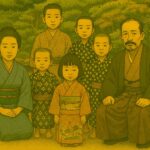
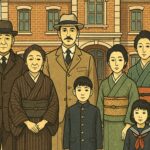
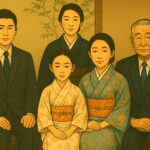
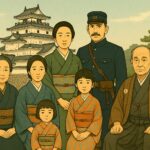





![The crisp texture of Nebuta pickles is a must-have for both rice and alcohol! [Aomori Prefecture] 22814530_m](https://jp.neft.asia/wp-content/uploads/2024/03/22814530_m-150x150.jpg)
![The lyrics were written in the song in the past... Night trains departing from Ueno and heading to Aomori [Aomori Prefecture] 1745034_l](https://jp.neft.asia/wp-content/uploads/2024/06/1745034_l-150x150.jpg)
